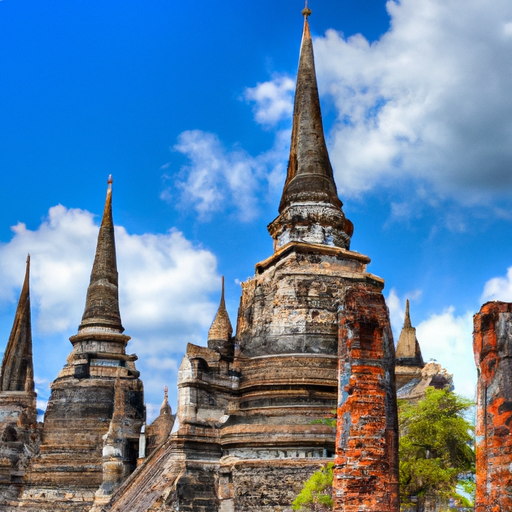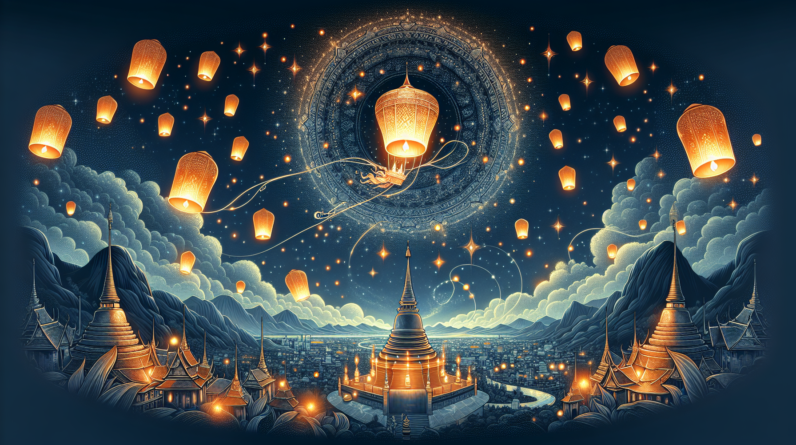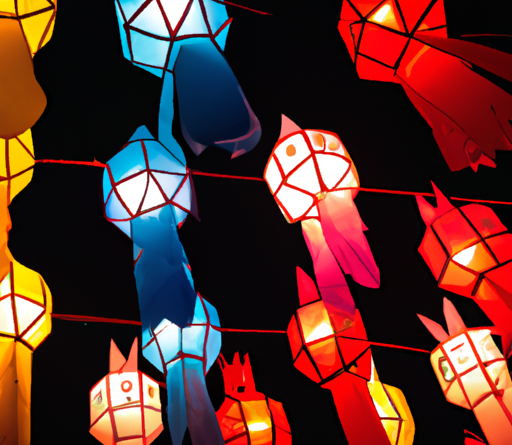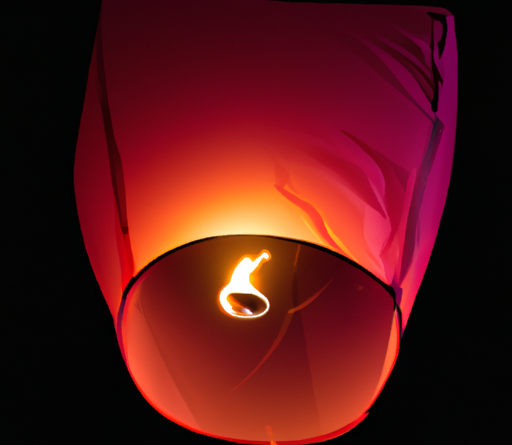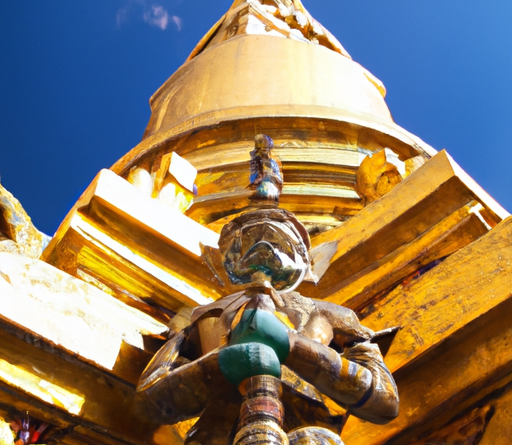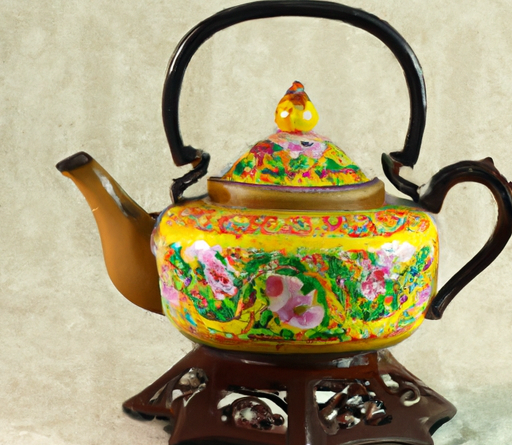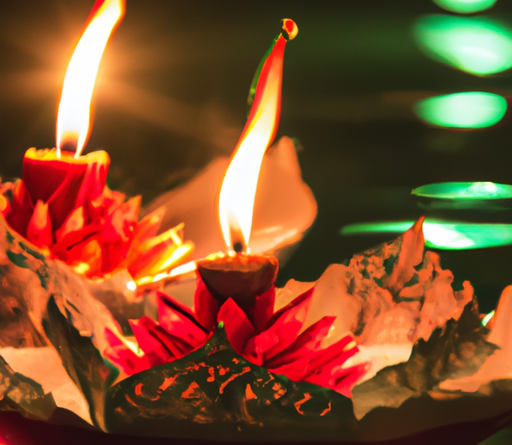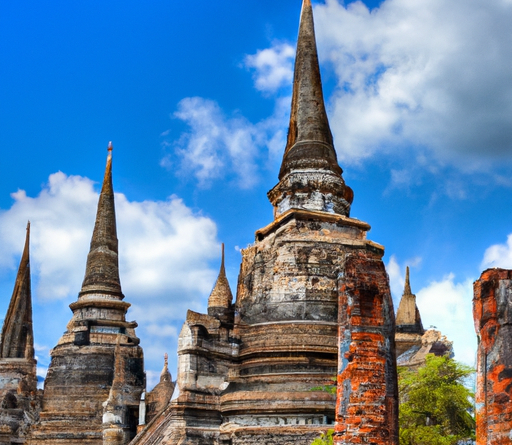
Thailand’s rich heritage is home to a multitude of fascinating landmarks, each with its own captivating stories waiting to be discovered. From ancient temples to historical ruins, these heritage landmarks hold the key to understanding the country’s vibrant past. Embark on a journey through time as you unlock the secrets of Thailand’s heritage landmarks, unraveling hidden tales of royalty, spirituality, and cultural significance that have shaped the nation’s identity. Immerse yourself in the enchanting world of Thailand’s historical treasures, embracing the warmth and hospitality of its people as you delve into a truly unforgettable experience.
Exploring the Historic City of Ayutthaya
Introduction to Ayutthaya
Welcome to the historic city of Ayutthaya! Located just north of Bangkok, Ayutthaya was once the magnificent capital of the Kingdom of Siam. Founded in 1350, this ancient city is rich in history, culture, and architectural wonders. Ayutthaya was declared a UNESCO World Heritage Site in 1991, preserving its heritage for generations to come. As you explore this captivating city, you’ll be transported back in time to a golden age of Thai civilization.
The Magnificent Temples of Ayutthaya
Ayutthaya is known for its breathtaking temples, which reflect the city’s religious and cultural significance. The most famous temple in Ayutthaya is Wat Mahathat, renowned for its iconic Buddha head entwined in the roots of a banyan tree. Another must-visit temple is Wat Phra Si Sanphet, which once housed the royal palace and is home to three stunning chedis representing the past, present, and future. Don’t miss Wat Lokayasutharam, where you can find a 42-meter-long reclining Buddha, an impressive sight to behold.
The Ayutthaya Historical Park
To truly immerse yourself in Ayutthaya’s history, a visit to the Ayutthaya Historical Park is a must. This vast archaeological site covers an area of 289 hectares and showcases the city’s ancient ruins. As you wander through the park, you’ll come across the remnants of palaces, temples, and fortresses, each with its own fascinating story to tell. Be sure to explore Wat Chaiwatthanaram, a riverside temple that offers a stunning view of the surrounding area, and Wat Phra Ram, known for its beautiful gardens.
Discovering the Hidden Gems of Ayutthaya
While Ayutthaya’s temples and historical park are its main attractions, the city also has hidden gems waiting to be discovered. Take a leisurely boat ride along the Chao Phraya River and explore the off-the-beaten-path areas, where you can witness the local way of life. Experience the everyday hustle and bustle of the floating market, where you can sample delicious street food and purchase unique souvenirs. Don’t forget to visit the Ayutthaya Elephant Palace and Royal Kraal, where you can learn about these majestic creatures and even enjoy an elephant ride.
Unveiling the Mysteries of Sukhothai
Introduction to Sukhothai
A visit to the ancient city of Sukhothai is like stepping into a time capsule. Located in the northern part of Thailand, Sukhothai was the first capital of the Kingdom of Sukhothai from the 13th to 15th centuries. This UNESCO World Heritage Site is renowned for its well-preserved ruins and remarkable architecture. Sukhothai’s historical significance and awe-inspiring beauty make it a must-visit destination for history buffs and adventure seekers alike.
Exploring the Sukhothai Historical Park
The Sukhothai Historical Park is the heart and soul of the ancient city. Spanning an area of 70 square kilometers, the park consists of numerous temples, royal palaces, and other significant structures. Wat Mahathat, the park’s centerpiece, is known for its towering Buddha statues and intricate stucco carvings. Wat Si Chum is another highlight, featuring a massive seated Buddha image that exudes serenity and grace. Spend a day exploring the park by bicycle or on foot, and let the grandeur of Sukhothai’s past engulf you.
The Incredible Architecture of Sukhothai
Sukhothai’s architecture is a testament to the skill and craftsmanship of its builders. The temples and monuments are characterized by their graceful and intricate details, reflecting the artistic style of the Sukhothai Kingdom. The elegant stupas, ornate statues, and elaborate bas-reliefs showcase the mastery of Sukhothai’s artisans. Each structure tells a story of the kingdom’s prosperity and the flourishing Buddhist culture that thrived during that time. Don’t miss the opportunity to witness these architectural wonders up close and marvel at their timeless beauty.
Sukhothai’s Cultural Significance
Beyond its historical and architectural splendor, Sukhothai holds immense cultural significance. The city played a pivotal role in shaping the Thai nation, as it was during the Sukhothai Kingdom that many aspects of Thai culture, language, and art were developed and refined. As you explore the temples and delve into the history, you’ll gain a deeper understanding of Thailand’s rich heritage. Don’t forget to visit the Ramkhamhaeng National Museum, which houses a remarkable collection of artifacts that provide further insight into the kingdom’s cultural legacy.
Journeying Through the Ancient Capital of Chiang Mai
Introduction to Chiang Mai
Welcome to Chiang Mai, the ancient capital of the Lanna Kingdom! Nestled amidst mist-covered mountains in northern Thailand, Chiang Mai is a city steeped in history and charm. Known as the “Rose of the North,” Chiang Mai offers a unique blend of old-world charm and modern attractions. From its rich cultural heritage to its vibrant markets and friendly locals, there’s something for everyone in this captivating city.
The Walled City of Chiang Mai
One of the most iconic features of Chiang Mai is its ancient city walls. Built in the 13th century to protect the kingdom from foreign invasions, the walls now serve as a reminder of the city’s past grandeur. Take a leisurely stroll along the fortified walls and imagine yourself transported back in time. Don’t miss the gates of Chiang Mai, especially the Tha Phae Gate, which serves as the main entrance to the old city. As you traverse the streets, you’ll encounter hidden temples, traditional wooden houses, and charming cafes that offer a glimpse into Chiang Mai’s unique culture.
Exploring the Temples of Chiang Mai
Chiang Mai is known as the “City of Temples,” and with over 300 temples scattered throughout the city, it’s easy to see why. Each temple has its own distinct charm and historical significance. Wat Phra That Doi Suthep, perched on a hill overlooking the city, is a must-visit. The temple offers breathtaking views, an awe-inspiring golden chedi, and intricate murals that depict the life of the Buddha. Another temple worth exploring is Wat Chedi Luang, which was once the tallest structure in ancient Chiang Mai. As you wander from temple to temple, you’ll experience the spiritual essence that permeates the city.
Chiang Mai’s Rich Cultural Heritage
Chiang Mai’s cultural heritage is deeply rooted in the traditions of the Lanna Kingdom. Immerse yourself in the local way of life by visiting the vibrant markets, such as the famous Sunday Walking Street Market and the Night Bazaar. Here, you can sample delicious Thai street food, browse unique handicrafts, and immerse yourself in the lively atmosphere. For a truly immersive experience, consider participating in a traditional Thai cooking class or a meditation retreat. These activities allow you to connect with the locals and gain a deeper appreciation for Chiang Mai’s rich cultural tapestry.
Treasures of the Old Capital: Lampang
Introduction to Lampang
Nestled along the banks of the Wang River, Lampang is a hidden gem waiting to be discovered. Often overshadowed by its more famous neighboring cities, Lampang offers a glimpse into Thailand’s rich cultural heritage. Known as the old capital of the Lanna Kingdom, Lampang’s history dates back to the 7th century. As you wander through the city’s streets, you’ll be captivated by its well-preserved architecture, charming wooden houses, and the tranquil beauty of its surroundings.
The Historic Architecture of Lampang
Lampang is famous for its stunning architectural heritage. The city’s unique blend of Lanna, Burmese, and Chinese influences is reflected in its temples, teak houses, and mansions. One of the most prominent landmarks is the Wat Phra That Lampang Luang, which is considered one of the most beautiful temples in Thailand. This magnificent structure displays a stunning blend of Lanna and Burmese architectural styles. The Dhanabadee Ceramic Museum is another hidden gem, showcasing a collection of exquisite ceramics that reflect Lampang’s cultural heritage.
Exploring the Burmese-inspired Temples
Lampang is home to several temples that showcase the influence of Burmese architecture. Wat Si Rong Muang is a prime example, with its distinctive Burmese-style chedi and intricate woodcarvings. The temple’s peaceful atmosphere and ornate decorations make it a delight to explore. Another noteworthy temple is Wat Sri Chum, famed for its large Burmese-style pagoda and intricate murals. As you wander through these temples, you’ll gain insight into the historical and cultural connections between Thailand and its neighboring countries.
Lampang’s Lanna Heritage
Lampang’s cultural heritage is deeply rooted in the Lanna Kingdom. The city’s annual festivals, such as the famous Elephant Conservation Day and the traditional “Yok Dok” Silk Festival, celebrate the vibrant Lanna culture. Visit the Baan Sao Nak, also known as the “House of Many Pillars,” to get a glimpse into traditional Lanna architecture and lifestyle. Don’t miss the opportunity to explore Lampang’s charming old town, where you can take a horse-drawn carriage ride and stroll through the local markets. Lampang’s rich Lanna heritage makes it a truly unique destination that should not be missed.
Unveiling the Beauty of Phitsanulok
Introduction to Phitsanulok
Welcome to Phitsanulok, a hidden treasure in the heart of Thailand. Situated on the banks of the Nan River, Phitsanulok is often overlooked by tourists but holds immense historical significance. Known as the birthplace of King Naresuan the Great, Phitsanulok played a crucial role in the country’s history. Discover the city’s captivating temples, immerse yourself in its rich cultural heritage, and uncover its hidden gems.
The Famous Wat Phra Si Rattana Mahathat
Phitsanulok’s most iconic landmark is the Wat Phra Si Rattana Mahathat, also known as Wat Yai. This magnificent temple houses the revered Phra Buddha Chinnarat, one of Thailand’s most important Buddhist images. The statue’s exquisite craftsmanship and spiritual aura make it a must-visit for religious and cultural enthusiasts alike. Take a moment to admire the intricate details of the temple’s architecture and soak in the serene atmosphere.
Phitsanulok’s Rich History and Heritage
Phitsanulok’s history is deeply intertwined with the Kingdom of Sukhothai and the Ayutthaya Kingdom. The city’s strategic location made it a center of political and cultural influence. Visit the Sergeant Major Thawee Folk Museum to learn more about Phitsanulok’s history and explore its collection of artifacts and exhibits. As you delve into the city’s past, you’ll gain a deeper appreciation for its role in shaping Thailand’s history and national identity.
Exploring Phitsanulok’s Traditional Craftsmanship
Phitsanulok is renowned for its traditional craftsmanship, particularly in the fields of wood carving and bronze casting. The Ban Na Pho Community, located just outside the city, is known for its skilled artisans who create intricate wooden sculptures using traditional techniques. Visit their workshops and witness the artistry firsthand. Head to the Naresuan Bridge, where you can observe bronze-casting in action. The city’s commitment to preserving these traditional crafts is a testament to its cultural heritage and artistic legacy.
Discovering the Ancient City of Ayutthaya
Introduction to Ayutthaya
Welcome to Ayutthaya, the ancient capital of Thailand! Located just north of Bangkok, Ayutthaya is a treasure trove of history and cultural heritage. Established in 1350, Ayutthaya flourished as a political and economic hub, and its grandeur attracted visitors from across the globe. Today, the ruins of Ayutthaya stand as a testament to its glorious past, offering visitors a glimpse into the rich history and architectural marvels of this UNESCO World Heritage Site.
Exploring the Ayutthaya Historical Park
The Ayutthaya Historical Park is a vast archaeological site that spans a significant portion of the ancient city. As you wander through the park, you’ll encounter impressive temples, towering statues, and the remnants of royal palaces. The park’s highlights include Wat Phra Si Sanphet, the largest and most important temple in Ayutthaya, and Wat Mahathat, famous for the iconic Buddha head entwined in the roots of a banyan tree. This park is a history lover’s paradise, with countless opportunities to immerse yourself in Ayutthaya’s heritage.
The Enchanting Temples of Ayutthaya
Ayutthaya is home to a multitude of temples, each with its own unique charm. Wat Lokayasutharam is a must-visit, as it houses a massive reclining Buddha statue that stretches 42 meters in length. Wat Chaiwatthanaram is another iconic temple that showcases the grandeur and architectural beauty of the ancient kingdom. Its riverside location offers scenic views of the Chao Phraya River, creating a serene and enchanting atmosphere. As you explore Ayutthaya’s temples, prepare to be awe-inspired by their intricate details and spiritual significance.
Ayutthaya’s Importance in Thai History
Ayutthaya’s significance in Thai history cannot be overstated. For over four centuries, it served as the capital of the Kingdom of Siam, witnessing the rise and fall of various dynasties. Ayutthaya’s strategic location along important trade routes contributed to its economic prosperity, allowing it to flourish as a center for commerce and cultural exchange. However, the golden age of Ayutthaya came to an end with the Burmese invasion in 1767. Despite the destruction caused, the remnants of Ayutthaya’s glorious past continue to captivate visitors and serve as a reminder of Thailand’s rich historical legacy.
Delving into the Beloved City of Phetchaburi
Introduction to Phetchaburi
Welcome to Phetchaburi, a city steeped in history, natural beauty, and cultural heritage. Located on the western coast of Thailand, Phetchaburi offers a unique blend of ancient temples, royal palaces, and stunning natural landscapes. From its iconic Phra Nakhon Khiri Royal Palace to its vibrant markets and delectable Thai cuisine, Phetchaburi is a hidden gem waiting to be explored.
The Magnificent Phra Nakhon Khiri Royal Palace
Phra Nakhon Khiri, also known as Khao Wang, is a regal complex that dominates Phetchaburi’s skyline. Perched atop a hill, this stunning palace was built in the 19th century as a summer retreat for King Rama IV. The palace’s architecture combines Thai, European, and Khmer influences, creating a unique fusion of styles. Explore the palace’s various buildings and pavilions, climb the mountaintop for panoramic views, and immerse yourself in the rich history and cultural significance of this royal abode.
Exploring Phetchaburi’s Ancient Temples
Phetchaburi is home to a plethora of ancient temples that showcase the city’s deep spiritual roots. Wat Mahathat Worawihan is one of the most important temples in the area, housing sacred relics and exquisite murals that depict Buddhist legends. Wat Yai Suwannaram is another noteworthy temple, renowned for its finely crafted stucco work and intricate woodcarvings. The tranquil atmosphere and ornate architecture of these temples provide a sense of serenity and a glimpse into Thailand’s rich religious traditions.
Phetchaburi’s Unique Cultural Heritage
Phetchaburi’s cultural heritage is shaped by its centuries-old history and diverse influences. The city’s night markets offer a sensory feast, with an array of street food, local handicrafts, and traditional performances. Don’t miss the opportunity to sample Phetchaburi’s famous sweet treats, such as Khanom Mo Kaeng (steamed custard cake) and Khanom Mor Gaeng (coconut custard). As you engage with the locals and explore the nooks and crannies of the city, you’ll discover Phetchaburi’s unique charm and feel the warmth of its people.
Journeying Back in Time: Outlying Historical Landmarks
Introduction to Outlying Historical Landmarks
While Thailand’s well-known historical landmarks are a delight to explore, venturing to the outlying areas unveils a wealth of lesser-known treasures. These historical landmarks offer a more intimate experience, allowing you to delve deeper into Thailand’s rich past. From ancient sanctuaries to sprawling historical parks, these destinations are a testament to the enduring legacy of Thailand’s ancient civilizations.
The Ancient Sanctuary of Phimai
Located in Nakhon Ratchasima province, the Phimai Historical Park is a jewel of Khmer architecture. This ancient sanctuary was built during the 10th and 11th centuries and showcases the grandeur of the Khmer Empire. The park’s centerpiece is the Prasat Hin Phimai, a magnificent temple resembling the famous Angkor Wat. Marvel at the intricate carvings and bas-reliefs that adorn the temple, depicting scenes from Hindu mythology. The Phimai Historical Park offers a captivating glimpse into the region’s Khmer heritage and is a must-visit for history enthusiasts.
Visiting the Historical Park in Kamphaeng Phet
Nestled between Sukhothai and Chiang Mai, Kamphaeng Phet is often overshadowed by its neighboring cities. However, this historical park is a hidden gem that rewards intrepid travelers. The Kamphaeng Phet Historical Park boasts several ruins, including ancient temples, city walls, and archaeological sites. The park’s serene atmosphere and lack of crowds allow for a peaceful exploration of Thailand’s history. Don’t miss Wat Phra Kaeo, which once housed the renowned Emerald Buddha before it was moved to Bangkok. Uncover the secrets of Kamphaeng Phet and revel in the beauty of its ancient treasures.
Exploring the Ruins of Si Satchanalai Historical Park
Located near Sukhothai, the Si Satchanalai Historical Park offers a glimpse into the magnificent Sukhothai Kingdom. This sprawling archaeological site is home to numerous temples, ruins, and historical artifacts. Wander through the park’s tranquil grounds and discover hidden treasures, such as Wat Chang Lom with its distinctive elephant-shaped buttresses and Wat Phra Si Rattana Mahathat, known for its splendid Buddha images. Si Satchanalai Historical Park provides a serene and evocative setting for exploring the rich tapestry of Thailand’s past.
Retracing the Footsteps of the Mon People: Ancient Cities of Mueang Sing and Wiang Khum Kam
Introduction to Mueang Sing and Wiang Khum Kam
Mueang Sing and Wiang Khum Kam are ancient cities that showcase the influence of the Mon people, an ethnic group that once inhabited parts of Thailand. These lesser-known destinations offer an off-the-beaten-path experience, allowing you to immerse yourself in the rich cultural heritage of the Mon people. From ancient temples to hidden archaeological sites, Mueang Sing and Wiang Khum Kam are veritable treasure troves waiting to be explored.
Mueang Sing: The Lost Capital of the Mon People
Mueang Sing was once the capital of the Mon Kingdom and served as a center of trade and culture. Today, the city’s ruins offer a glimpse into its glorious past. Explore the ancient city’s remnants, which include temples, fortresses, and city walls. The highlight of Mueang Sing is Prasat Mueang Sing, an impressive temple that showcases a mix of Mon and Khmer architectural styles. The grandeur of Mueang Sing will transport you back in time and provide a deeper understanding of the Mon people’s cultural legacy.
Wiang Khum Kam: The Forgotten City
Situated just outside Chiang Mai, Wiang Khum Kam is an archaeological site that was once the capital of the Lanna Kingdom. Abandoned for centuries due to constant flooding, this forgotten city was rediscovered in the early 20th century. Marvel at the intricate designs of the temples, such as Wat Chedi Liam, famous for its ancient brick chedi and beautiful stucco works. Explore the ruins by bicycle or horse-drawn carriage, and let the fading splendor of Wiang Khum Kam transport you to a bygone era.
Understanding the Mon’s Influence on Thai Culture
The Mon people have had a profound impact on Thai culture, leaving behind a lasting legacy that is honored to this day. Their influence can be seen in various aspects, including architecture, language, and arts. The Mon script, for example, played a significant role in the development of Thai writing. As you explore Mueang Sing and Wiang Khum Kam, you’ll gain a deeper appreciation for the Mon people’s contributions and their lasting imprint on Thai culture.
Preserving Heritage: Thailand’s Museums and Preservation Centers
Introduction to Thai Heritage Preservation
Preserving Thailand’s rich cultural heritage is of paramount importance to ensure its legacy for future generations. Throughout the country, numerous museums and preservation centers are dedicated to safeguarding and showcasing Thailand’s historical artifacts, artwork, and traditions. These institutions serve as gateways to the past, allowing visitors to deepen their understanding of Thailand’s diverse heritage.
Exploring Bangkok’s National Museum
The Bangkok National Museum is a treasure trove of Thai art and history. Located within the grounds of the former Wang Na Palace, the museum houses an extensive collection of artifacts, including ancient sculptures, Buddhist art, and royal regalia. Explore the museum’s various galleries, which trace the evolution of Thai art and culture from prehistoric times to the present day. The Bangkok National Museum provides a comprehensive overview of Thailand’s heritage and is a must-visit for any history enthusiast.
Chiang Mai’s Tribal Museum and Lanna Folklife Museum
Chiang Mai is home to two notable museums that celebrate the city’s cultural diversity and ancient traditions. The Tribal Museum showcases the unique cultures and traditions of Thailand’s indigenous hill tribes. Explore the displays of traditional clothing, artifacts, and intricate handicrafts that highlight the tribes’ way of life. The Lanna Folklife Museum, on the other hand, focuses on the history and customs of the Lanna Kingdom. From traditional farming tools to ancient manuscripts, this museum offers a fascinating glimpse into the region’s rich cultural heritage.
The Importance of Preservation Centers
Beyond museums, Thailand has various preservation centers dedicated to safeguarding its cultural treasures. These centers work tirelessly to restore and conserve ancient artifacts and architectural marvels. The Ayutthaya Conservation Center, for instance, focuses on preserving Ayutthaya’s historical buildings and archaeological sites. Through meticulous restoration efforts, these centers ensure that Thailand’s heritage landmarks can be appreciated by future generations. The presence of these preservation centers underscores Thailand’s commitment to preserving its cultural legacy and keeping its heritage landmarks alive.
